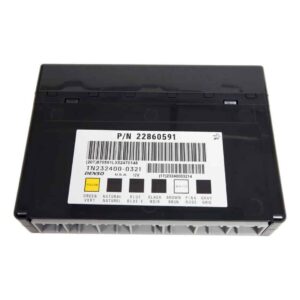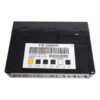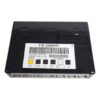End the Electrical Gremlins in Your GM Vehicle
Are you chasing down bizarre electrical issues in your 2010 GMC Yukon XL 1500? Flickering dashboard lights, power windows with a mind of their own, or a security system that prevents your truck from starting are classic signs of a failing Body Control Module (BCM). As the nerve center for your vehicle’s body electronics, when the BCM falters, it can create a cascade of frustrating and unpredictable problems. In my 20+ years of hands-on diagnostics, I’ve seen countless owners and even seasoned mechanics get stumped by these exact symptoms, often replacing batteries and alternators unnecessarily.
This isn’t just another part—it’s a complete, ready-to-install solution. We offer a professional BCM Cloning Service. Simply send us your vehicle’s VIN after purchase, and we will program this replacement module with the latest GM software specific to your vehicle. This process transfers all the necessary configuration data, making the installation process as close to plug-and-play as possible and saving you hundreds in dealership programming fees.
From the Diagnostic Bay: A Common Pitfall
I remember a 2010 Tahoe that came into the shop with the owner at his wit’s end. The radio would turn on and off, the door locks would cycle while driving, and he’d get intermittent ‘Service StabiliTrak’ messages. The codes were all over the place, mostly communication errors (U-codes). Before condemning the BCM, my first step is always to check the basics. On these GMT900 platforms, the BCM is located under the driver’s side dash, and it’s susceptible to moisture from a leaking cowl or windshield. Sure enough, we found faint signs of corrosion on one of the main connectors. While in his case a simple cleaning fixed it, for many others, that moisture has already damaged the BCM’s internal circuit board. Always check your connectors for a tight fit and any signs of green or white corrosion before replacing the module!
Common Signs of a Failing GM BCM
If your vehicle is exhibiting several of the following symptoms, a faulty BCM is the likely culprit. A scan tool may show communication codes like U0140, U0155, or other related body codes.
- ✔ Erratic or non-functional power windows, door locks, and mirrors.
- ✔ Interior dome lights or dashboard lights staying on or not working at all.
- ✔ The security or anti-theft light is illuminated, causing a no-start condition.
- ✔ Horn honking randomly or not working when pressed.
- ✔ Intermittent warning messages on the driver information center (DIC).
- ✔ Rapid battery drain when the vehicle is turned off.
- ✔ Unresponsive key fob or remote start functions.
Your Straightforward BCM Installation Guide
For the confident DIYer, replacing the BCM is a manageable job. The key is taking your time and being organized.
- Safety First: Disconnect the negative terminal from your vehicle’s battery and wait at least 10 minutes to ensure all modules have powered down completely.
- Locate the BCM: On most 2010 Yukon XL 1500 models and similar GM SUVs/trucks, the BCM is located under the driver-side dashboard, to the left of the steering column. You may need to remove a lower dash panel for access.
- Disconnect and Remove: Carefully unplug the multiple electrical connectors. They have locking tabs that need to be depressed. Note their orientation. Once disconnected, unbolt or unclip the old BCM from its mounting bracket.
- Install the New Module: Mount your new, pre-programmed BCM in the same location. Reconnect all electrical connectors firmly, ensuring each one clicks into place. A loose connection is the #1 cause of post-installation issues.
- Reconnect Power: Re-attach the negative battery terminal and tighten it securely.
- Perform Final Checks: Start the vehicle and test all body functions: lights, locks, windows, radio, wipers, etc. Note that some relearn procedures may be required as outlined below.
Important Post-Installation Procedures
Because this module is cloned from your original, most functions will work immediately. However, depending on your vehicle’s specific configuration, you may need a scan tool for these final steps:
- Airbag System Sync: If the airbag (SRS) light is on after installation, a ‘Setup SDM Primary Key in BCM’ procedure is necessary to sync the new BCM with the airbag module. This requires a professional-grade diagnostic tool.
- Brake Pedal Position Relearn: To ensure correct brake light operation and traction control function, a brake pedal position sensor relearn may be required.
Disclaimer: Procedures can vary. Always consult a factory service manual for your specific vehicle.
Verified Vehicle Compatibility List
This module is a direct replacement for part number 15948439 and is interchangeable with a wide range of other part numbers. It fits numerous GM vehicles. Please verify your part number or contact us with your VIN to confirm fitment.
This list is a summary. Please match your original part number from the list provided in the technical details to ensure compatibility.
Frequently Asked Questions
What is a BCM cloning service?
Our cloning service involves transferring the specific vehicle data (like VIN, options, and security information) from your original, failing BCM to this replacement unit. This ensures the module is configured correctly for your vehicle, eliminating the need for expensive dealership programming.
Do I need to program this module after I receive it?
No. The module arrives pre-programmed to your VIN and is ready for installation. In some cases, minor relearn procedures for systems like the airbag or brake pedal sensor may be required, which can be done with a capable scan tool.
What happens to my original BCM?
We require your original module to perform the cloning service. After the data is successfully transferred to the replacement unit, we securely package and return your original module to you along with the newly programmed one. We do not keep your core.
Will this fix my ‘Service StabiliTrak’ message?
A failing BCM can certainly cause this message by disrupting communication with the traction control and ABS systems. While this module often resolves the issue, the message can also be triggered by other components like wheel speed sensors or the steering angle sensor. Proper diagnosis is key.
Is this a guaranteed fix for my vehicle’s no-start problem?
If the no-start is caused by the BCM’s control over the vehicle’s anti-theft or security system (often indicated by a flashing security light), then this programmed module is the correct solution. However, no-start conditions can also be caused by issues with the starter, battery, fuel system, or ignition switch.



